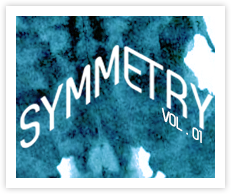

It’s All in the Name
Josh Robin Young // December 2, 2011

In 2006 the Conservative Party of Canada won a minority government, and Stephen Harper became Prime Minister. To reflect his new Prime Minstership, Harper re-branded his government. In 2010, the order was sent out to replace “Government of Canada” with “Harper Government” in all official documents. However, this change of name was relatively small in terms of impact compared to the Harper Government’s new methods of dealing with the media in an attempt at “message control”.
In previous governments the media had been allowed free access to most areas of Parliament and were given most of the information deemed necessary to properly report on the government’s activities. Since the Harper administration has taken office, many of these rights have been repealed.
The media have complained that their calls are not returned, they are not given appropriate access to cabinet ministers, they are given copies of speeches only when they are days old, and they are forced to submit questions before press conferences to allow the Prime Minister’s Office (PMO) to carefully select what reporters can ask. The PMO has also banned the media from certain events including photo-ops, meetings with public officials, visits by heads of state and premiers, and the funerals of dead soldiers returning from Afghanistan.
The Centre for Constitutional Studies point out that there is nothing in Harper’s new media policy that directly conflicts with freedom of the press. The Centre observes: “The Charter protects freedom of the press but does not place any positive obligations on the government to be transparent, open, and forthcoming with the Canadian public.”
That said, the basic principles of public relations theory and, more specifically, James Grunig’s theory of two-way symmetrical communication state that being transparent, open, and forthcoming are of the utmost importance when communicating with a strategic public.
This point becomes even more significant when we take into account that the government is not just any organization. The government is responsible, above all else, to its citizens–to all of Canada. The proper management of this relationship, therefore, becomes even more important.
The press plays a vital role in this relationship in that it “…serves as the citizen’s representative in the broad system of checks and balances.” If the Harper Government shuts out the press, or limits their access, the government is also shutting out its citizens, and those who elected it to office. The government has a responsibility to its electorate to act in its best interests, and should allow free access to relevant information the public needs to ensure the government is doing a good job.
These concerns become even more serious when one examines the potentially unethical way the government has censored the press. Though, as mentioned above, the government has not censored information the press is allowed to release; instead, government has limited the information journalists are able to collect. For example, in choosing which questions will be asked at press conferences, the government is able to manipulate how the press cover certain topics. This method of message control allows the government to escape the responsibility of responding to tough questions.
These limitations stop the press from acting as watchdogs by keeping government accountable. This attempt at message control has turned the government into an organization that allows their administration to meet their own needs, but not the needs of its people.
The government has shut out the press and seems to have forgotten its responsibility to be accountable to its citizens. It seems appropriate now that the PMO switched from “Government of Canada” to “Harper Government”. Harper seems to be running the government according to his needs rather than based on the needs of his people and his responsibility to them.
-
http://www.facebook.com/asterling Adam Sterling
-
Guest
